
Denmark, a Nordic country in Northern Europe, boasts a rich history, progressive social policies, and a high quality of life. Comprising the Jutland Peninsula and islands like Zealand and Funen, with Copenhagen as its vibrant capital, Denmark is renowned for its robust welfare state, emphasizing healthcare, education, and well-being. Its diverse landscape includes flat terrain, rolling hills, and a picturesque coastline. The economy thrives on exports, with a focus on pharmaceuticals, renewable energy, IT, and food products. The nation stands out for its sustainability efforts, leading in wind energy and climate action. With a cultural heritage in literature and design, Denmark is a constitutional monarchy with a parliamentary system, embodying both tradition and modernity.
Ranked as one of the top ten global RFID suppliers, GAO RFID Inc. has facilitated many customers in Denmark to deploy RFID, BLE, IoT and drone technologies. GAO is based in New York City, U.S. and Toronto, Canada. GAO offers a comprehensive selection of UHF, HF, NFC, and LF RFID readers and tags, BLE (Low Energy Bluetooth) gateways and beacons, and various RFID and BLE systems such as people tracking, asset tracking, access control, parking control, fleet management, WIP (work in progress), traceability. GAO RFID provides the customization of RFID tags, RFID readers, BLE beacons and BLE gateways, IoT, drones, and systems and consulting services for customers in Denmark, and other countries in North America, particularly the U.S., Canada, Mexico, and Europe: https://gaorfid.com/services. Its sister company, GAO Tek Inc. https://gaotek.com, is a leading supplier of industrial or commercial testers and analyzers, drones, and network products for customers from North America, particularly the U.S., Canada and Mexico, and Europe. In addition to English, both websites https://gaorfid.com and https://gaotek.com are offered in other languages of North America and Europe such as Spanish, French, German, Italian, Polish, Ukrainian, Romanian, Russian, Dutch, Turkish, Greek, Hungarian, Swedish, Czech, Portuguese, Serbian, Bulgarian, Croatian, Danish, Finnish, Norwegian, Slovak, Catalan, Lithuanian, Bosnian, Galician, Slovene, Latvian, Estonian, Welsh, Icelandic, and Irish.
Denmark Metros Are Leaders in RFID, BLE, IoT & Drones
Denmark has the following economically dynamic metropolitans:
- Copenhagen
- Aarhus
- Odense
- Aalborg
- Esbjerg
Copenhagen
The Copenhagen is the largest and most prominent urban region in Denmark. Centered around the capital city, Copenhagen, it encompasses several municipalities on the islands of Zealand and Amager, as well as parts of southern Sweden. Copenhagen is not only the political and cultural heart of Denmark but also a major economic and educational hub in the region. The metropolitan area is characterized by its vibrant city life, historical landmarks, modern architecture, and a rich cultural scene. With a diverse range of industries including finance, technology, creative sectors, and research institutions, the Copenhagen Metropolitan Area plays a crucial role in driving the country’s economy. Additionally, the area is well-connected by efficient public transportation systems, making it an attractive destination for both residents and visitors alike.
Copenhagen has the following top industries:
- Finance and Banking Industry: Copenhagen is a financial center with a strong presence of banks, investment firms, and financial services companies. Companies of finance and banking industry have used extensively GAO’s RFID, BLE, IoT and drone technologies. For more information, please visit:
- www.gaorfid.com/finance-insurance-industries-rfid-solutions/
- www.gaorfid.com/information-electronic-telecommunications-industries-rfid-solutions/
- Information Technology Industry: The region is home to numerous IT companies, startups, and tech hubs, contributing to Denmark’s growing tech ecosystem. Companies of information technology industry have used extensively GAO’s RFID, BLE, IoT and drone technologies. For more information, please visit:
- www.gaorfid.com/research-technology-professional-services-industries-rfid-solutions/
- www.gaorfid.com/education-services-rfid-solutions/
- Life Sciences and Healthcare Industry: Copenhagen is known for its biotech, pharmaceutical, and healthcare companies, along with research institutions and medical facilities. Companies of life sciences and healthcare industry have used extensively GAO’s RFID, BLE, IoT and drone technologies. For more information, please visit:
- www.gaorfid.com/healthcare-rfid-solutions/
- www.gaorfid.com/research-technology-professional-services-industries-rfid-solutions/
- Design and Creative Industry: The city has a vibrant creative scene, including architecture, design firms, advertising agencies, and cultural institutions. Companies of design and creative industry have used extensively GAO’s RFID, BLE, IoT and drone technologies. For more information, please visit:
- www.gaorfid.com/entertainment-industry-rfid-solutions/
- www.gaorfid.com/education-services-rfid-solutions/
- Renewable Energy and Sustainability Industry: Denmark’s commitment to green energy is reflected in the presence of renewable energy companies and sustainability initiatives in the metropolitan area. Companies of renewable energy and sustainability industry have used extensively GAO’s RFID, BLE, IoT and drone technologies. For more information, please visit:
- www.gaorfid.com/mining-and-oil-gas-extraction-industries-rfid-solutions/
- www. gaorfid.com/utilities-industry-rfid-solutions/
- Shipping and Logistics Industry: Given its strategic location, Copenhagen has a strong maritime industry, including shipping companies and logistics providers. Companies of shipping and logistics industry have used extensively GAO’s RFID, BLE, IoT and drone technologies. For more information, please visit:
- www.gaorfid.com/supply-chain-logistics-industries-rfid-solutions/
- www.gaorfid.com/retail-trade-rental-industry-rfid-solutions/
- Food and Beverage Industry: The region boasts culinary innovation, with food startups, restaurants, and beverage companies contributing to the economy. Companies of food and beverage industry have used extensively GAO’s RFID, BLE, IoT and drone technologies. For more information, please visit:
- www.gaorfid.com/agriculture-forestry-fisheries-rfid-solutions/
- www.gaorfid.com/food-beverage-manufacturing-rfid-solutions/
- Education and Research Industry: Copenhagen is home to renowned universities, research centers, and educational institutions, fostering innovation and knowledge exchange. Companies of education and research industry have used extensively GAO’s RFID, BLE, IoT and drone technologies. For more information, please visit:
- www.gaorfid.com/research-technology-professional-services-industries-rfid-solutions/
- www.gaorfid.com/education-services-rfid-solutions/
- Pharmaceuticals and Biotechnology Industry: The area hosts companies focused on pharmaceuticals, biotech research, and development, contributing to life sciences advancements. Companies of pharmaceuticals and biotechnology industry have used extensively GAO’s RFID, BLE, IoT and drone technologies. For more information, please visit:
- www.gaorfid.com/research-technology-professional-services-industries-rfid-solutions/
- www.gaorfid.com/education-services-rfid-solutions/
- Retail and Consumer Goods Industry: The city supports a diverse range of retail establishments, from luxury brands to local boutiques, catering to various consumer needs. Companies of trade and logistics industry have used extensively GAO’s RFID, BLE, IoT and drone technologies. For more information, please visit:
- www.gaorfid.com/supply-chain-logistics-industries-rfid-solutions/
- www.gaorfid.com/retail-trade-rental-industry-rfid-solutions/
Aarhus
The Aarhus is a significant urban region situated on the eastern coast of the Jutland Peninsula in Denmark. Anchored by the city of Aarhus, which is the country’s second-largest city, this metropolitan area is known for its economic, educational, and cultural importance. Aarhus serves as a vital center for commerce, industry, and education, with a strong emphasis on research and innovation. The city is home to Aarhus University, a prestigious institution contributing to the region’s intellectual vitality and knowledge-based economy. The Aarhus Metropolitan Area features a diverse economic landscape, encompassing sectors such as information technology, manufacturing, research and development, healthcare, and creative industries. The region’s coastal location has historically contributed to maritime trade and commerce. Aarhus itself offers a mix of modern architecture, historic landmarks, cultural institutions, and recreational spaces. The metropolitan area’s well-connected transportation networks facilitate both local commuting and international connectivity, making it a key player in Denmark’s economic and cultural mosaic.
The top industries of Aarhus include:
- Education and Research Industry: Aarhus is home to several universities and research institutions, making education and research a significant industry in the area. Companies of education and research industry have used extensively GAO’s RFID, BLE, IoT and drone technologies. For more information, please visit:
- www.gaorfid.com/education-services-rfid-solutions/
- www.gaorfid.com/research-technology-professional-services-industries-rfid-solutions/
- Technology and IT Industry: The metropolitan area has a growing technology and IT sector, with companies focusing on software development, digital solutions, and innovation. Companies of technology and it industry have used extensively GAO’s RFID, BLE, IoT and drone technologies. For more information, please visit:
- www.gaorfid.com/research-technology-professional-services-industries-rfid-solutions/
- www.gaorfid.com/education-services-rfid-solutions/
- Agribusiness and Food Production Industry: Aarhus is surrounded by fertile agricultural land, leading to a strong agribusiness and food production industry, including food processing, research, and export. Companies of agribusiness and food production industry have used extensively GAO’s RFID, BLE, IoT and drone technologies. For more information, please visit:
- www.gaorfid.com/agriculture-forestry-fisheries-rfid-solutions/
- www.gaorfid.com/food-beverage-manufacturing-rfid-solutions/
- Renewable Energy Industry: The Aarhus region has been investing in renewable energy, particularly wind energy, and hosts companies involved in wind turbine manufacturing, research, and sustainable energy solutions. Companies of renewable energy industry have used extensively GAO’s RFID, BLE, IoT and drone technologies. For more information, please visit:
- www.gaorfid.com/mining-and-oil-gas-extraction-industries-rfid-solutions/
- www. gaorfid.com/utilities-industry-rfid-solutions/
- Logistics and Transportation Industry: Given its strategic location, Aarhus has a well-developed logistics and transportation industry, including shipping, port operations, and distribution networks. Companies of logistics and transportation industry have used extensively GAO’s RFID, BLE, IoT and drone technologies. For more information, please visit:
- www.gaorfid.com/supply-chain-logistics-industries-rfid-solutions/
- www.gaorfid.com/retail-trade-rental-industry-rfid-solutions/
- Healthcare and Life Sciences Industry: Aarhus is known for its medical research and healthcare facilities, contributing to the healthcare and life sciences sector’s growth. Companies of healthcare and life sciences industry have used extensively GAO’s RFID, BLE, IoT and drone technologies. For more information, please visit:
- www.gaorfid.com/healthcare-rfid-solutions/
- www.gaorfid.com/research-technology-professional-services-industries-rfid-solutions/
- Creative Industry: The metropolitan area has a thriving creative sector, including design, architecture, media production, and advertising. Companies of creative industry have used extensively GAO’s RFID, BLE, IoT and drone technologies. For more information, please visit:
- www.gaorfid.com/entertainment-industry-rfid-solutions/
- www.gaorfid.com/education-services-rfid-solutions/
- Manufacturing Industry: Traditional manufacturing industries, such as machinery, equipment, and pharmaceuticals, play a role in the economic landscape of the Aarhus region. Companies of manufacturing industry have used extensively GAO’s RFID, BLE, IoT and drone technologies. For more information, please visit:
- www.gaorfid.com/manufacturing-industry-rfid-solutions/
- www.gaorfid.com/mining-and-oil-gas-extraction-industries-rfid-solutions/
- Tourism and Hospitality Industry: Aarhus has become a cultural and tourism destination, leading to a growing hospitality industry, including hotels, restaurants, and cultural attractions. Companies of tourism and hospitality industry have used extensively GAO’s RFID, BLE, IoT and drone technologies. For more information, please visit:
- www.gaorfid.com/retail-trade-rental-industry-rfid-solutions/
- www.gaorfid.com/specialty-services-industry-rfid-solutions/
- Financial Services Industry: The financial sector, including banking, insurance, and financial technology, also contributes to the Aarhus Metropolitan Area’s economic activity. Companies of financial services industry have used extensively GAO’s RFID, BLE, IoT and drone technologies. For more information, please visit:
- www.gaorfid.com/finance-insurance-industries-rfid-solutions/
- www.gaorfid.com/information-electronic-telecommunications-industries-rfid-solutions/
Odense
The Odense centered around the city of Odense on the island of Funen, Denmark, is a vibrant region blending historical significance with modern innovation. Birthplace of Hans Christian Andersen, the area has transitioned from an industrial hub to an innovation center with universities and research institutions. It offers a mix of urban amenities and natural landscapes, fostering a high quality of life. With a focus on robotics and sustainability, Odense embraces smart city initiatives while maintaining its cultural heritage. Its connectivity and economic dynamism contribute to its role as a key player in Danish urban development.
The top industries of Odense include:
- Manufacturing and Engineering Industry: Odense has a strong tradition in manufacturing and engineering, particularly in industries such as robotics, automation, and machinery production. The city is known as the birthplace of the robotics company Universal Robots, which has played a key role in shaping the region’s reputation in this field. Companies of manufacturing and engineering industry have used extensively GAO’s RFID, BLE, IoT and drone technologies. For more information, please visit:
- www.gaorfid.com/manufacturing-industry-rfid-solutions/
- www.gaorfid.com/research-technology-professional-services-industries-rfid-solutions/
- Maritime and Shipping Industry: Due to its location and historical connections with maritime activities, the maritime and shipping industries are important in Odense. The city’s port and related services contribute to its economy. Companies of maritime and shipping industry have used extensively GAO’s RFID, BLE, IoT and drone technologies. For more information, please visit:
- www.gaorfid.com/automotive-industry-rfid-solutions/
- www.gaorfid.com/manufacturing-industry-rfid-solutions/
- Healthcare and Medical Technology Industry: Odense is also a hub for healthcare and medical technology. The city is home to various medical research institutions and companies focused on developing innovative healthcare solutions and medical devices. Companies of healthcare and medical technology industry have used extensively GAO’s RFID, BLE, IoT and drone technologies. For more information, please visit:
- www.gaorfid.com/healthcare-rfid-solutions/
- www.gaorfid.com/research-technology-professional-services-industries-rfid-solutions/
- Information Technology Industry: Odense has been growing its presence in the information technology sector. Startups and companies in areas like software development, data analysis, and IT services have been emerging in the region. Companies of information technology industry have used extensively GAO’s RFID, BLE, IoT and drone technologies. For more information, please visit:
- www.gaorfid.com/research-technology-professional-services-industries-rfid-solutions/
- www.gaorfid.com/manufacturing-industry-rfid-solutions/
- Renewable Energy and Cleantech Industry: Denmark’s overall emphasis on renewable energy and sustainable practices is reflected in Odense’s focus on renewable energy technologies and cleantech solutions. Companies of renewable energy and cleantech industry have used extensively GAO’s RFID, BLE, IoT and drone technologies. For more information, please visit:
- www.gaorfid.com/mining-and-oil-gas-extraction-industries-rfid-solutions/
- www. gaorfid.com/utilities-industry-rfid-solutions/
- Food and Agriculture Industry: As in many regions of Denmark, food and agriculture remain important industries. Odense’s location in the agricultural heartland of the country contributes to its agricultural and food processing activities. Companies of food and agriculture industry have used extensively GAO’s RFID, BLE, IoT and drone technologies. For more information, please visit:
- www.gaorfid.com/agriculture-forestry-fisheries-rfid-solutions/
- www.gaorfid.com/food-beverage-manufacturing-rfid-solutions/
- Creative and Cultural Sectors Industry: Odense has a growing creative and cultural scene, with industries related to design, media, arts, and entertainment contributing to the city’s vibrancy. Companies of creative and cultural sectors industry have used extensively GAO’s RFID, BLE, IoT and drone technologies. For more information, please visit:
- www.gaorfid.com/entertainment-industry-rfid-solutions/
- www.gaorfid.com/education-services-rfid-solutions/
- Education and Research Industry: With institutions like the University of Southern Denmark (SDU) and research centers, education and research are significant components of Odense’s economy. Companies of education and research industry have used extensively GAO’s RFID, BLE, IoT and drone technologies. For more information, please visit:
- www.gaorfid.com/education-services-rfid-solutions/
- www.gaorfid.com/research-technology-professional-services-industries-rfid-solutions/
Aalborg
The Aalborg is a prominent urban region located in the northern part of Jutland, Denmark. Centered around the city of Aalborg, this area serves as a vital economic, cultural, and educational hub. Aalborg, Denmark’s fourth-largest city, is known for its historical significance and modern amenities. It boasts a mix of industries, including manufacturing, commerce, and education, making it a dynamic economic center. The metropolitan area offers a range of cultural attractions, museums, and events, contributing to its vibrant cultural scene. With its strategic location on the Limfjord strait and well-connected transportation networks, the Aalborg Metropolitan Area plays a key role in trade and commerce, fostering regional development and innovation.
The top industries of Aalborg include:
- Energy and Renewable Resources Industry: Aalborg is a hub for renewable energy research and development, with a focus on wind energy. The city hosts leading companies and institutions engaged in wind turbine technology, design, and innovation. Companies of energy and renewable resources industry have used extensively GAO’s RFID, BLE, IoT and drone technologies. For more information, please visit:
- www.gaorfid.com/mining-and-oil-gas-extraction-industries-rfid-solutions/
- www. gaorfid.com/utilities-industry-rfid-solutions/
- Maritime and Shipping Industry: Given its proximity to the North Sea and its strong maritime tradition, Aalborg is involved in shipbuilding, maritime equipment manufacturing, and port-related activities. The port of Aalborg is a key economic driver in the region. Companies of maritime and shipping industry have used extensively GAO’s RFID, BLE, IoT and drone technologies. For more information, please visit:
- www.gaorfid.com/automotive-industry-rfid-solutions/
- www.gaorfid.com/manufacturing-industry-rfid-solutions/
- Information Technology Industry: The Aalborg metropolitan area has a growing IT sector, with companies specializing in software development, data analytics, and technology solutions. Companies of information technology industry have used extensively GAO’s RFID, BLE, IoT and drone technologies. For more information, please visit:
- www.gaorfid.com/research-technology-professional-services-industries-rfid-solutions/
- www.gaorfid.com/education-services-rfid-solutions/
- Healthcare and Life Sciences Industry: Aalborg is home to hospitals, research centers, and medical technology companies that contribute to the healthcare and life sciences sector. This includes research in biotechnology and medical innovations. Companies of healthcare and life sciences industry have used extensively GAO’s RFID, BLE, IoT and drone technologies. For more information, please visit:
- www.gaorfid.com/healthcare-rfid-solutions/
- www.gaorfid.com/research-technology-professional-services-industries-rfid-solutions/
- Manufacturing and Engineering Industry: Aalborg has a history of manufacturing, including machinery, equipment, and metal products. Engineering firms in the region are involved in various sectors, from industrial machinery to electronics. Companies of manufacturing and engineering industry have used extensively GAO’s RFID, BLE, IoT and drone technologies. For more information, please visit:
- www.gaorfid.com/manufacturing-industry-rfid-solutions/
- www.gaorfid.com/research-technology-professional-services-industries-rfid-solutions/
- Education and Research Industry: With institutions like Aalborg University, the metropolitan area is a center of education and research, covering fields such as engineering, natural sciences, social sciences, and humanities. Companies of education and research industry have used extensively GAO’s RFID, BLE, IoT and drone technologies. For more information, please visit:
- www.gaorfid.com/research-technology-professional-services-industries-rfid-solutions/
- www.gaorfid.com/education-services-rfid-solutions/
- Food and Beverage Processing Industry: The region has a food industry that includes food processing, manufacturing, and distribution, contributing to both local and export markets. Companies of food and beverage processing industry have used extensively GAO’s RFID, BLE, IoT and drone technologies. For more information, please visit:
- www.gaorfid.com/agriculture-forestry-fisheries-rfid-solutions/
- www.gaorfid.com/food-beverage-manufacturing-rfid-solutions/
- Construction and Real Estate Industry: Aalborg’s growth has led to development in the construction and real estate sector, with commercial and residential projects shaping the urban landscape. Companies of construction and real estate industry have used extensively GAO’s RFID, BLE, IoT and drone technologies. For more information, please visit:
- www.gaorfid.com/construction-industry-rfid-solutions-2/
- www.gaorfid.com/retail-trade-rental-industry-rfid-solutions/
- Tourism and Hospitality Industry: Aalborg’s historical sites, cultural events, and scenic surroundings attract tourists, thereby supporting the hospitality industry, including hotels, restaurants, and entertainment venues. Companies of tourism and hospitality industry have used extensively GAO’s RFID, BLE, IoT and drone technologies. For more information, please visit:
- www.gaorfid.com/retail-trade-rental-industry-rfid-solutions/
- www.gaorfid.com/specialty-services-industry-rfid-solutions/
- Creative Industry: The Aalborg metropolitan area hosts a range of creative businesses, including design firms, media production companies, and cultural institutions contributing to the arts and creative economy. Companies of creative and industry have used extensively GAO’s RFID, BLE, IoT and drone technologies. For more information, please visit:
- www.gaorfid.com/entertainment-industry-rfid-solutions/
- www.gaorfid.com/education-services-rfid-solutions/
Esbjerg
The Esbjerg Metropolitan Area, located in southwestern Denmark, is centered around the city of Esbjerg. It’s known for its maritime heritage, with Esbjerg serving as a crucial port city for shipping, fishing, and offshore energy industries along the North Sea coast. The area also features diverse economic activities, educational institutions, and cultural attractions, making it an appealing place to live and work.
The top industries of Esbjerg include:
- Energy and Offshore Industry: Esbjerg is a significant hub for the offshore energy industry, particularly in oil and gas exploration and wind energy. It serves as a base for many offshore operations, including maintenance, supply, and logistics for offshore platforms and wind farms. Companies of energy and offshore industry have used extensively GAO’s RFID, BLE, IoT and drone technologies. For more information, please visit:
- www.gaorfid.com/mining-and-oil-gas-extraction-industries-rfid-solutions/
- www. gaorfid.com/utilities-industry-rfid-solutions/
- Maritime and Shipping Industry: With a strategic coastal location, Esbjerg has a thriving maritime and shipping industry. The port of Esbjerg is a major gateway for trade, cargo handling, and ferry connections. Companies of maritime and shipping industry have used extensively GAO’s RFID, BLE, IoT and drone technologies. For more information, please visit:
- www.gaorfid.com/automotive-industry-rfid-solutions/
- www.gaorfid.com/manufacturing-industry-rfid-solutions/
- Agriculture and Food Processing Industry: The region has a strong agricultural presence, and food processing is a significant industry. Esbjerg’s port facilitates the import and export of agricultural products. Companies of agriculture and food processing industry have used extensively GAO’s RFID, BLE, IoT and drone technologies. For more information, please visit:
- www.gaorfid.com/agriculture-forestry-fisheries-rfid-solutions/
- www.gaorfid.com/food-beverage-manufacturing-rfid-solutions/
- Fisheries and Seafood Industry: Esbjerg is known for its fisheries and seafood industry, with fishing vessels, seafood processing plants, and related services contributing to the local economy. Companies of fisheries and seafood industry have used extensively GAO’s RFID, BLE, IoT and drone technologies. For more information, please visit:
- www.gaorfid.com/agriculture-forestry-fisheries-rfid-solutions/
- www.gaorfid.com/food-beverage-manufacturing-rfid-solutions/
- Manufacturing and Engineering Industry: The area has a diverse manufacturing sector, including machinery, equipment, and engineering firms that support various industries, including energy and agriculture. Companies of manufacturing and engineering industry have used extensively GAO’s RFID, BLE, IoT and drone technologies. For more information, please visit:
- www.gaorfid.com/manufacturing-industry-rfid-solutions/
- www.gaorfid.com/research-technology-professional-services-industries-rfid-solutions/
- Logistics and Transportation Industry: Due to its port facilities and strategic location, Esbjerg plays a crucial role in logistics and transportation, connecting the region to international markets. Companies of logistics and transportation industry have used extensively GAO’s RFID, BLE, IoT and drone technologies. For more information, please visit:
- www.gaorfid.com/supply-chain-logistics-industries-rfid-solutions/
- www.gaorfid.com/retail-trade-rental-industry-rfid-solutions/
- Renewable Energy Industry: Alongside its traditional oil and gas industry, Esbjerg has emerged as a center for renewable energy, particularly in wind energy production and technology development. Companies of renewable energy industry have used extensively GAO’s RFID, BLE, IoT and drone technologies. For more information, please visit:
- www.gaorfid.com/mining-and-oil-gas-extraction-industries-rfid-solutions/
- www. gaorfid.com/utilities-industry-rfid-solutions/
- Tourism and Hospitality Industry: Esbjerg’s coastal setting and cultural attractions make it a destination for tourism, contributing to the hospitality and service sectors. Companies of tourism and hospitality industry have used extensively GAO’s RFID, BLE, IoT and drone technologies. For more information, please visit:
- www.gaorfid.com/retail-trade-rental-industry-rfid-solutions/
- www.gaorfid.com/specialty-services-industry-rfid-solutions/
- Research and Innovation Industry: The region promotes research and innovation, particularly in the energy and maritime sectors, attracting companies and institutions focused on developing new technologies. Companies of research and innovation industry have used extensively GAO’s RFID, BLE, IoT and drone technologies. For more information, please visit:
- www.gaorfid.com/research-technology-professional-services-industries-rfid-solutions/
- www.gaorfid.com/education-services-rfid-solutions/
Deployment Examples
RFID Deployments
Below are some RFID application cases in Denmark:
Supply Chain Management: A major Danish retailer implemented RFID technology to enhance inventory accuracy and streamline stock replenishment processes across their stores.
Logistics and Warehousing: A logistics company in Denmark utilized RFID tags to track and manage shipments, improving visibility and reducing errors in the distribution process.
Healthcare: A Danish hospital integrated RFID tags into medical equipment, enabling efficient asset tracking and ensuring timely availability for patient care.
Manufacturing: An electronics manufacturer in Denmark employed RFID for real-time tracking of components, reducing assembly errors and optimizing production efficiency.
Library Management: Libraries in Denmark adopted RFID technology for self-checkout stations and inventory management, enhancing patron experience and optimizing book circulation.
Apparel Retail: Danish fashion retailers utilized RFID tags on clothing items to improve inventory accuracy, reduce stockouts, and enhance the overall shopping experience.
Waste Management: Municipalities in Denmark deployed RFID tags on waste bins to optimize waste collection routes and improve waste management practices.
Retail Inventory Management: Danish fashion brands implemented UHF RFID technology to automate inventory counts, minimize stock discrepancies, and improve replenishment efficiency.
Asset Tracking: Various Danish organizations utilized UHF RFID tags to track and manage valuable assets such as IT equipment, tools, and vehicles.
Automotive Industry: Automotive manufacturers in Denmark integrated UHF RFID for tracking parts and components along the assembly line, improving production accuracy.
Pharmaceuticals: Pharmaceutical companies in Denmark employed UHF RFID for tracking and tracing medications within the supply chain, ensuring product authenticity and regulatory compliance.
Livestock Management: Danish farms used UHF RFID ear tags to monitor and manage livestock, allowing for efficient identification, health monitoring, and data collection.
Access Control: Various facilities in Denmark, such as offices and public venues, adopted UHF RFID technology for access control and personnel management.
Cold Chain Monitoring: Danish food distributors employed UHF RFID sensors to monitor temperature-sensitive goods during transportation, ensuring quality and compliance.
Hospital Asset Tracking: Hospitals in Denmark utilized UHF RFID tags to track and manage medical equipment, reducing search time and improving patient care.
Many more applications of RFID by GAO can be found here
IoT Deployments
Below are some IoT application cases in in Denmark:
Smart City Infrastructure: In Denmark, IoT technology is used to create smart city solutions such as smart lighting, waste management optimization, and traffic flow management in urban areas.
Agriculture and Precision Farming: Farmers in Denmark leverage IoT devices to monitor soil moisture, temperature, and crop health, enabling precise irrigation and efficient resource allocation.
Energy Management: IoT-enabled energy monitoring systems are employed to track energy consumption in residential and commercial buildings, helping users make informed decisions about usage and efficiency improvements.
Healthcare and Elderly Care: IoT devices are utilized in healthcare applications, such as remote patient monitoring and fall detection systems for the elderly, enhancing patient care and safety.
Industrial Automation: Manufacturing industries in Denmark use IoT sensors to monitor equipment health, predict maintenance needs, and optimize production processes.
Environmental Monitoring: IoT networks are used for environmental monitoring, including air quality measurement, noise pollution tracking, and weather data collection.
Retail and Customer Analytics: Retailers deploy IoT technology to gather data on customer behavior, optimize store layouts, and enhance the shopping experience.
Waste Management: IoT-enabled waste bins are used to optimize waste collection routes, reducing costs and environmental impact.
Smart Home Systems: Danish households use IoT devices for home automation, including smart thermostats, security cameras, and voice-controlled assistants.
Transportation and Fleet Management: IoT-based tracking and monitoring systems are implemented in transportation and logistics to manage vehicle fleets efficiently and improve route planning.
Water Management: IoT sensors are employed to monitor water quality in rivers, lakes, and reservoirs, enabling timely responses to pollution or water supply issues.
Asset Tracking: Businesses use IoT technology to track and manage assets such as equipment, tools, and inventory, optimizing resource allocation.
Building Automation: IoT systems control building systems such as lighting, heating, ventilation, and air conditioning (HVAC) for improved energy efficiency and user comfort.
Maritime Industry: In Denmark’s maritime sector, IoT devices are utilized for vessel tracking, navigation, fuel consumption monitoring, and maritime safety.
Smart Parking Solutions: IoT sensors assist in managing parking spaces, guiding drivers to available spots and reducing congestion in urban areas.
Water Leak Detection: IoT sensors are deployed in buildings to detect water leaks and prevent damage by sending alerts to property owners or managers.
Air Quality Monitoring: IoT networks track air quality parameters like pollutants and allergens, providing valuable data for public health and environmental policies.
Waste Recycling: IoT-enabled recycling bins encourage proper waste separation and recycling practices, helping to reduce waste going to landfills.
Fleet Telematics: IoT devices in vehicles provide real-time data on driving behavior, fuel consumption, and maintenance needs, leading to safer and more efficient driving practices.
Sustainable Agriculture: IoT solutions support sustainable farming practices by monitoring soil conditions, irrigation, and weather forecasts to optimize crop yields.
Drone Deployments
Below are some drone usage cases in in Denmark:
Environmental Monitoring: Drones are utilized to monitor and assess environmental conditions in various locations, including wildlife habitats and protected areas.
Precision Agriculture: Drones provide farmers with valuable data for crop health analysis, yield prediction, and targeted application of resources like fertilizers and pesticides.
Infrastructure Inspection: Drones conduct inspections of critical infrastructure such as bridges, power lines, and communication towers, enabling efficient maintenance planning.
Search and Rescue Operations: Drones aid in locating missing persons and disaster survivors by covering large areas quickly and providing real-time data to rescue teams.
Coastal Erosion Monitoring: Drones help monitor and map coastal erosion rates, contributing to effective coastal management and protection strategies.
Construction Site Management: Drones offer regular aerial updates to construction site managers, facilitating progress tracking, issue identification, and project coordination.
Archaeological Surveys: Drones assist archaeologists in mapping and documenting archaeological sites, providing high-resolution imagery for analysis.
Industrial Inspections: Drones perform inspections in industrial settings, including factories and refineries, to identify maintenance needs and potential safety hazards.
Marine Wildlife Monitoring: Drones support marine researchers in monitoring and studying marine wildlife, including behavior patterns and conservation efforts.
Disaster Damage Assessment: Drones rapidly assess the extent of damage caused by natural disasters, assisting authorities in prioritizing response efforts.
Wind Energy Inspections: Drones inspect wind turbines for maintenance needs, reducing downtime and improving the efficiency of wind energy production.
Surveying and Mapping: Drones create accurate topographic maps and 3D models for urban planning, land development, and infrastructure projects.
Forest Fire Monitoring: Drones provide real-time information to firefighters during forest fire outbreaks, aiding in decision-making and containment efforts.
Oil Spill Detection: Drones help detect and monitor oil spills in marine environments, enabling faster response and minimizing environmental damage.
Wildlife Conservation: Drones are used to monitor and protect wildlife populations, track migration patterns, and combat illegal poaching.
Roof Inspections: Drones assess the condition of roofs on residential and commercial buildings, facilitating property maintenance.
Cultural Heritage Documentation: Drones capture detailed imagery of historical sites, contributing to cultural preservation and restoration projects.
Precision Mapping for Agriculture: Drones create precise field maps for agriculture, aiding in irrigation planning, crop monitoring, and yield optimization.
Traffic Management: Drones assist in traffic monitoring and management by providing real-time data on road conditions and congestion.
Pest and Disease Monitoring: Drones are employed in agriculture to monitor and control pest infestations, reducing the need for extensive chemical use.
GAO Makes Efforts to Satisfy Customers in Denmark
Large Choice of Products
To satisfy the diversified needs of their corporate customers in Denmark, GAO RFID Inc. and its sister company GAO Tek Inc. (https://gaotek.com) together offer a wide choice of RFID, BLE, IoT, drones, testing and measurement devices, and network products.
Fast Delivery
In order to shorten the delivery to our customers in Denmark, GAO has maintained a large stock of its products and is able to ship from its nearest warehouse in North America and Europe.
Good Support to Our Customers
We provide prompt support to customers in Denmark. Most of the tasks can be handled remotely. We travel to customers’ premises if necessary. Furthermore, we have built partnerships with some integrators, consulting firms and other service providers in different cities to further strengthen our services. Here are some of the service providers in Denmark we have worked with to serve our joint customers:
- IBM
- TCS
- Capgemini
- Microsoft
- SAP
- NNIT Group
- Infare
- Ellegaard Internet Design
- KRING Innovation
GAO Served Many Customers
GAO RFID Inc & GAO Tek Inc. have served many customers in Denmark:
- Novo Nordisk
- Maersk Group
- Carlsberg Group
- Vestas Wind Systems
- P. Moller-Maersk
- DONG Energy (now Ørsted)
- ISS A/S
- Lego Group
- Coloplast
- GN Store Nord
- FLSmidth & Co. A/S
- Rockwool Group
- Genmab
- NKT
- Hansen Holding
- Pandora
- JYSK
- Tryg Forsikring
- DSV Panalpina
- TDC Group
- Scandinavian Tobacco Group
- DFDS
- SAS Group
- Nets Group

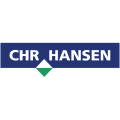
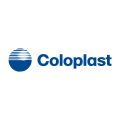
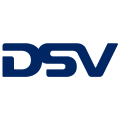
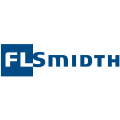

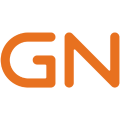



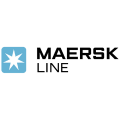
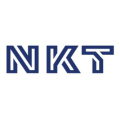
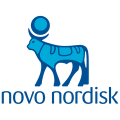
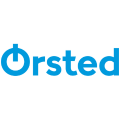

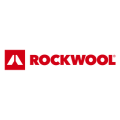
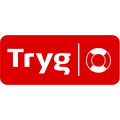
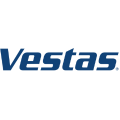
Contact Us
If you are interested in our products, services or partnering with us, please feel free to contact us by filling out this form:
https://gaorfid.com/ask-the-experts/ or email us at sales@gaorfid.com
